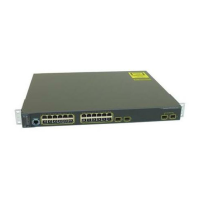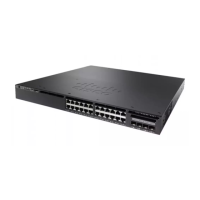of time configured. That is, the PIM “backs off” from another triggered RPF check for a minimum amount of
milliseconds as configured by the user.
If the backoff period expires without further routing table changes, PIM then scans for routing changes and
accordingly establishes multicast RPF changes. However, if more routing changes occur during the backoff
period, PIM doubles the backoff period to avoid overloading the device with PIM RPF changes while the
routing table is still converging.
Related Topics
Configuring PIM RPF Failover Intervals, on page 343
Example Configuring PIM RPF Failover Intervals, on page 347
Topology Changes and Multicast Routing Recovery
The Multicast Subsecond Convergence feature set enhances both enterprise and service provider network
backbones by providing almost instantaneous recovery of multicast paths after unicast routing recovery.
Because PIM relies on the unicast routing table to calculate its RPF when a change in the network topology
occurs, unicast protocols first need to calculate options for the best paths for traffic, and then multicast can
determine the best path.
Multicast subsecond convergence allows multicast protocol calculations to finish almost immediately after
the unicast calculations are completed. As a result, multicast traffic forwarding is restored substantially faster
after a topology change.
How to Configure Multicast Subsecond Convergence
Modifying the Periodic RPF Check Interval
Perform this optional task to modify the intervals at which periodic RPF checks occur.
Cisco recommends that you do not change the default values for the ip rpf intervalcommand. The default
values allow subsecond RPF failover. The default interval at which periodic RPF checks occur is 10
seconds.
Note
SUMMARY STEPS
1.
enable
2.
configure terminal
3.
ip multicast rpf interval seconds [list access-list | route-map route-map]
IP Multicast Routing Configuration Guide, Cisco IOS XE Release 3.6E (Catalyst 3850 Switches)
342 OL-32598-01
IP Multicast Optimization: Multicast Subsecond Convergence
Topology Changes and Multicast Routing Recovery
